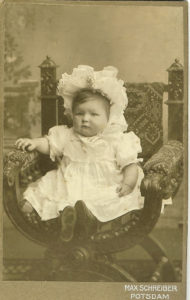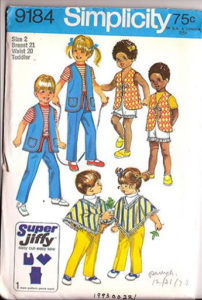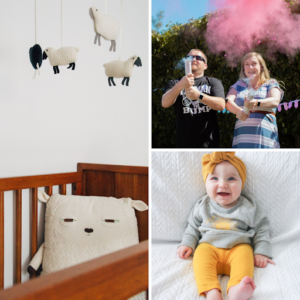When we think of babies, one of the first things we ask is: “boy or girl?” A baby in pink is assumed to be a girl and a baby in blue is assumed a boy. But why? When did these colors indicate gender? Why do we associate blue with boys and pink with girls? We dive into the history of this question in today’s blog!
(Not So) Colorful Beginnings

“Bonnet Baby” by ‘Playingwithbrushes’ | Flickr
Back in the late 1800s, baby clothing was focused more on functionality than fashion. Babies of both genders were dressed in clothes that were gender-neutral, like white dresses. That way it’d be 1) easier to change their diapers, and 2) the dresses could be easily cleaned by bleach. As time progressed, pinks, blues, and other pastels were introduced. It was not until around the time of World War I that colors began to become gender signifiers, and even then they were not dominant or widely accepted as they are today.
Marketing Has a Say
Marketing plays a large role in how a product is perceived by the public. The idea was if one created a “gender normal” or gender norm, it would entice parents to buy specific baby products. No one wants to be abnormal, right? That was the idea.
In 1918, an article from Earnshaw’s Infants’ Department put out that “the generally accepted rule is pink for the boys, and blue for the girls”. Say what? The reason for this was that blue was a more delicate color–deemed suitable for girls–and pink was a stronger color–more suitable for boys. However, In 1927 Time Magazine released a survey chart showing what colors different department stores across the country displayed for boys and girls, and the results were mixed. Going into the 1940’s, color preferences were decided by the choices of the manufacturers and retailers of baby clothing.
Interestingly as the 60’s and 70’s approached, with the women’s movement and the rise of feminism, the resurgence of unisex-dressed babies reemerged. They used less pink and styles that showed hints toward gender. However, by the 80’s, the pink and blue rules really started to stick with the public. Specifically around the mid-80’s prenatal testing began allowing parents to learn the sex of their baby, also around a rising time of mass marketing and consumerism. Retailers knew that individualized clothing would sell better than generic, and took the opportunity to cash in. Just as they do today, advertisers and retailers tapped into the social conventions of gender normality to help sell their product.
Today’s Stance On The Tradition
Today we focus on babies’ gender much more than we did as a society decades ago. “Gender-Reveal” parties are more popular than ever, further pushing the concept of pink is for girls and blue is for boys. However, even with the increase in gender-color association from the past, gender-neutral clothing is growing as well.There are many parents who prefer to decorate their baby’s room in a neutral theme and buy clothes that are “grown up” rather than a “baby” look. An increase in acceptance of the “girly” color pink by men can also be noted, showing we may eventually be able to move past the gendered color association that comes with blue and pink.


